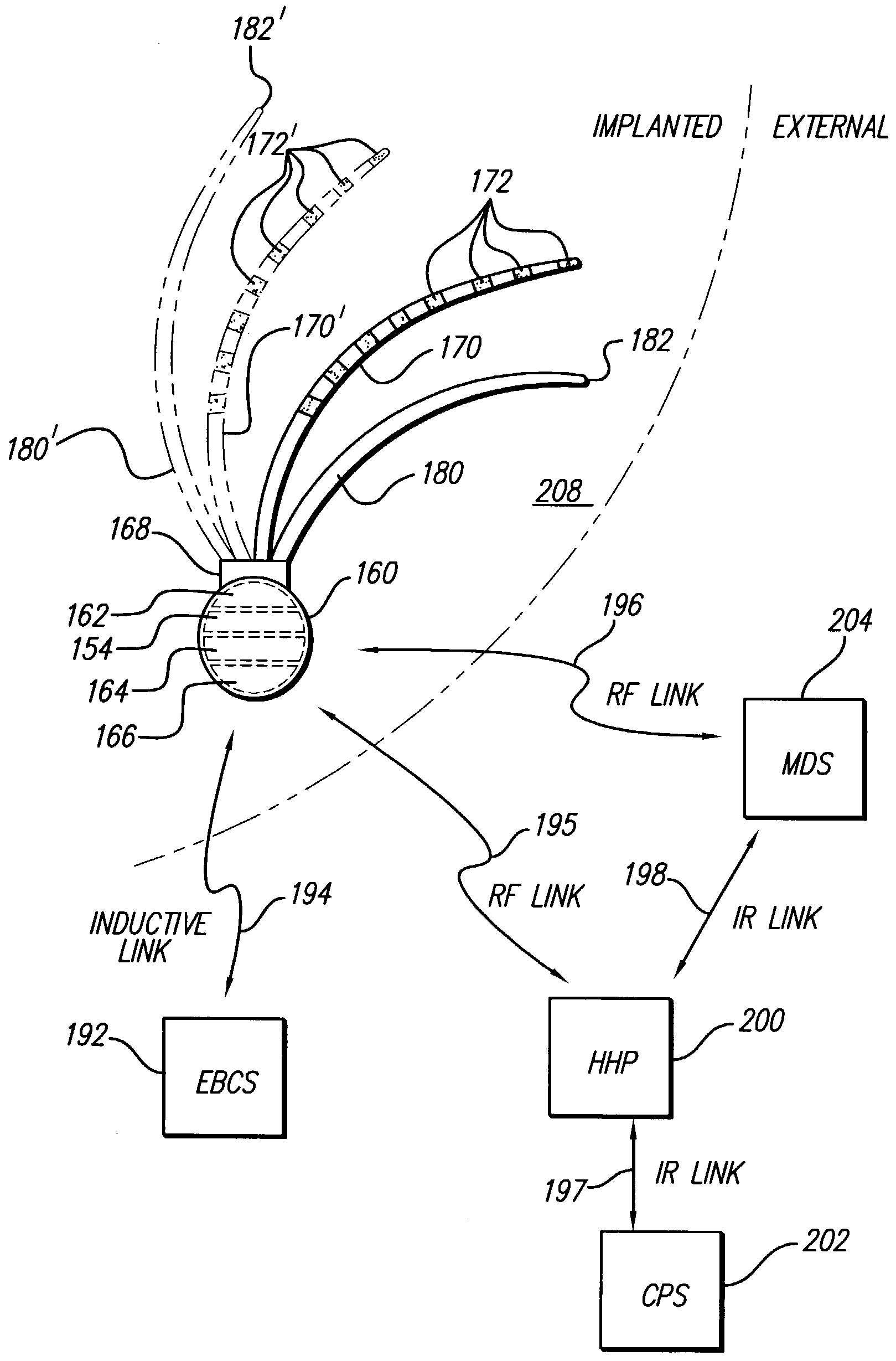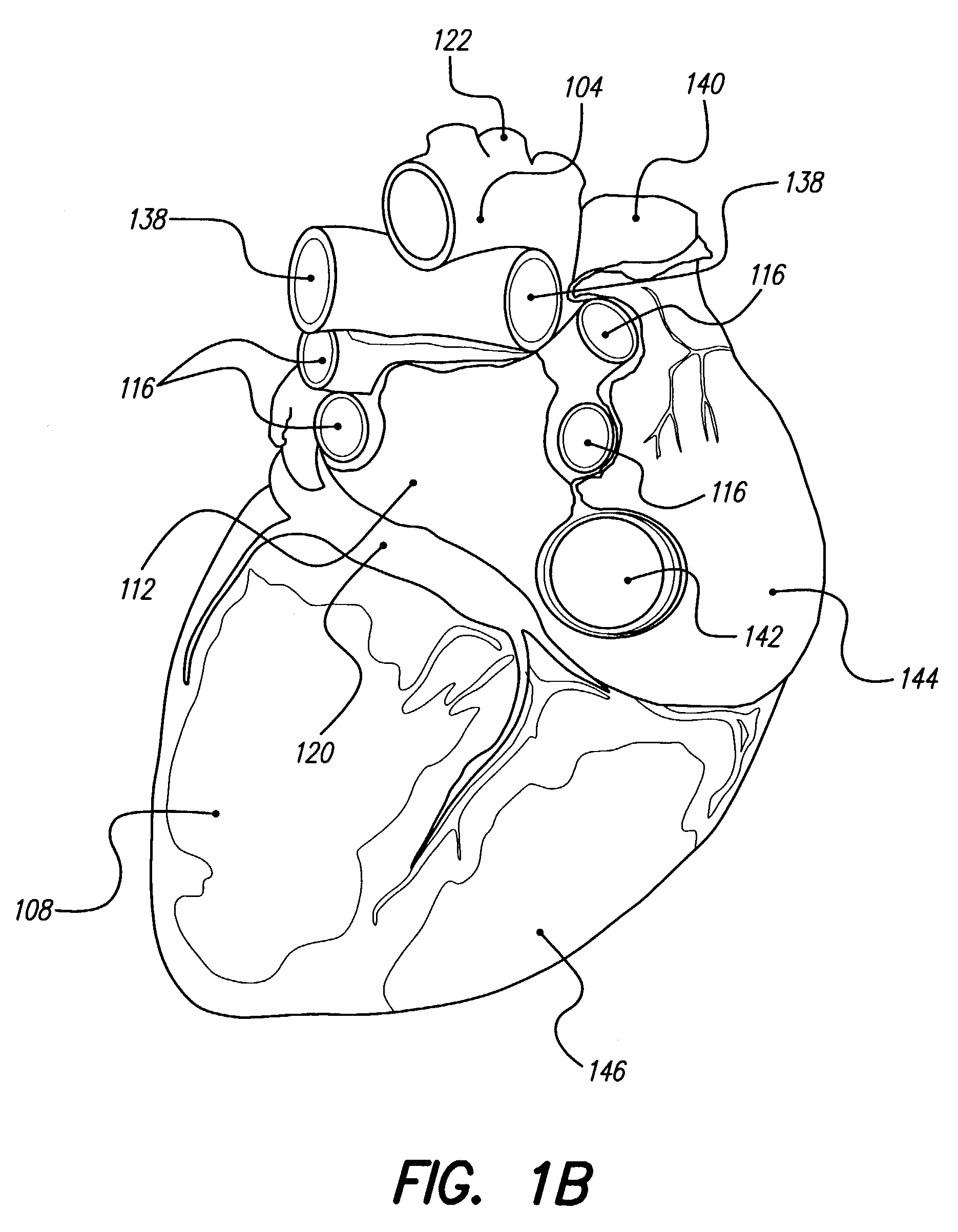Thrombolysis and chronic anticoagulation therapy
a technology of anticoagulation therapy and thrombolysis, which is applied in the field of thrombolysis and chronic anticoagulation therapy, can solve the problems of significant morbidity and mortality in affected individuals, decreased mortality and morbidity, and major complications of bleeding, and achieve the effect of freeing patients from reliance on r
- Summary
- Abstract
- Description
- Claims
- Application Information
AI Technical Summary
Benefits of technology
Problems solved by technology
Method used
Image
Examples
Embodiment Construction
[0062]The following description is of the best mode presently contemplated for carrying out the invention. This description is not to be taken in a limiting sense, but is made merely for the purpose of describing the general principles of the invention. The scope of the invention should be determined with reference to the claims.
[0063]FIG. 1A depicts the coronary arteries and the cardiac veins of the sternocostal surface of the heart, while FIG. 1B is a posteroinferior view of the diaphragmatic surface of the heart, and FIG. 2 shows an inferior view of the arteries of the brain. As mentioned earlier, delivery of one or more stimulating drugs may be used to prevent or treat thromboembolic disease. Electrical stimulation may also be applied during infusion of a stimulating drug(s).
[0064]The drug(s) are preferably delivered to any vessel that may influence the coronary circulation, including one or more of the coronary arteries 100 (which herein describes also branches of the coronary ...
PUM
 Login to View More
Login to View More Abstract
Description
Claims
Application Information
 Login to View More
Login to View More - R&D
- Intellectual Property
- Life Sciences
- Materials
- Tech Scout
- Unparalleled Data Quality
- Higher Quality Content
- 60% Fewer Hallucinations
Browse by: Latest US Patents, China's latest patents, Technical Efficacy Thesaurus, Application Domain, Technology Topic, Popular Technical Reports.
© 2025 PatSnap. All rights reserved.Legal|Privacy policy|Modern Slavery Act Transparency Statement|Sitemap|About US| Contact US: help@patsnap.com



